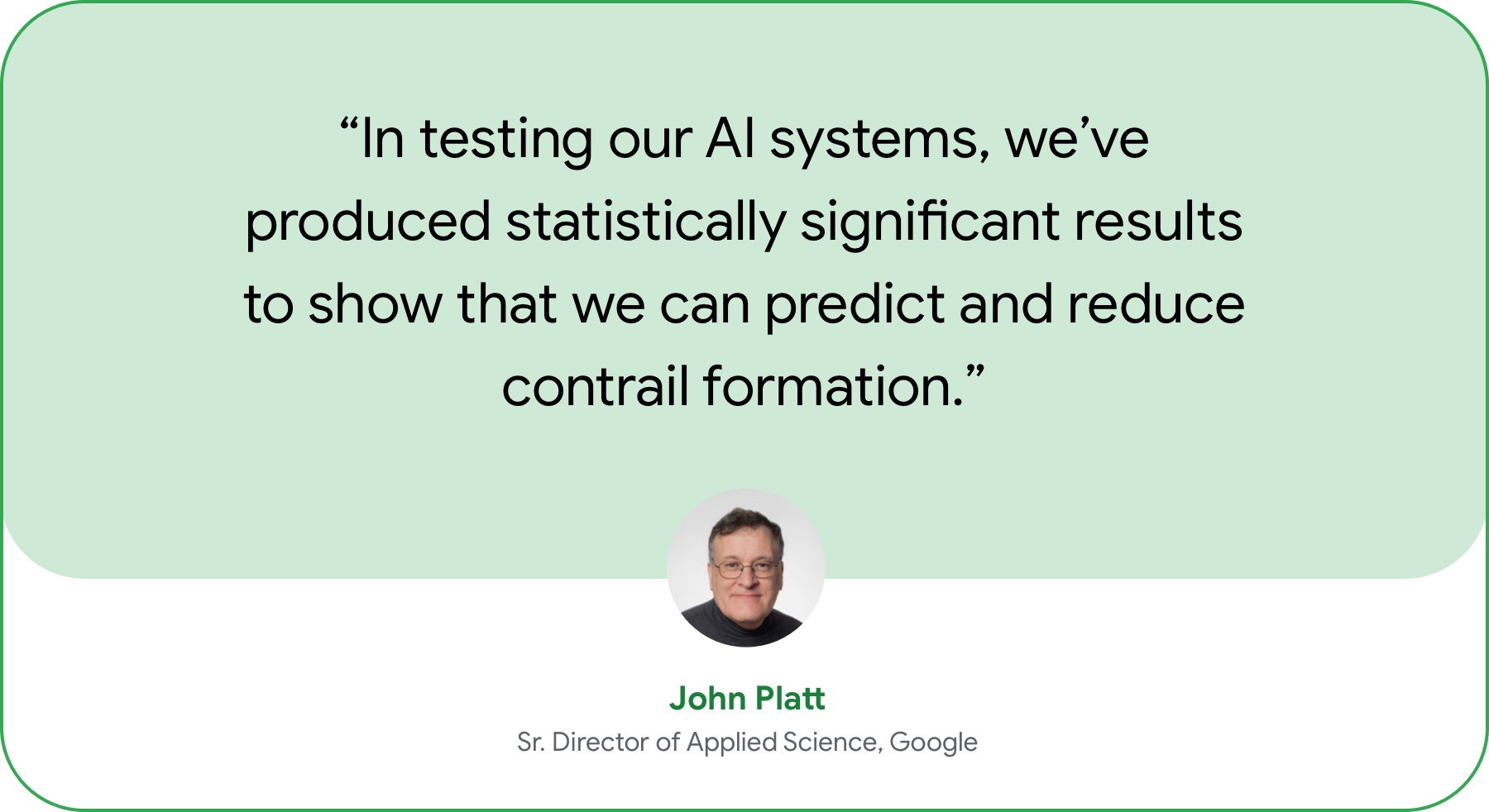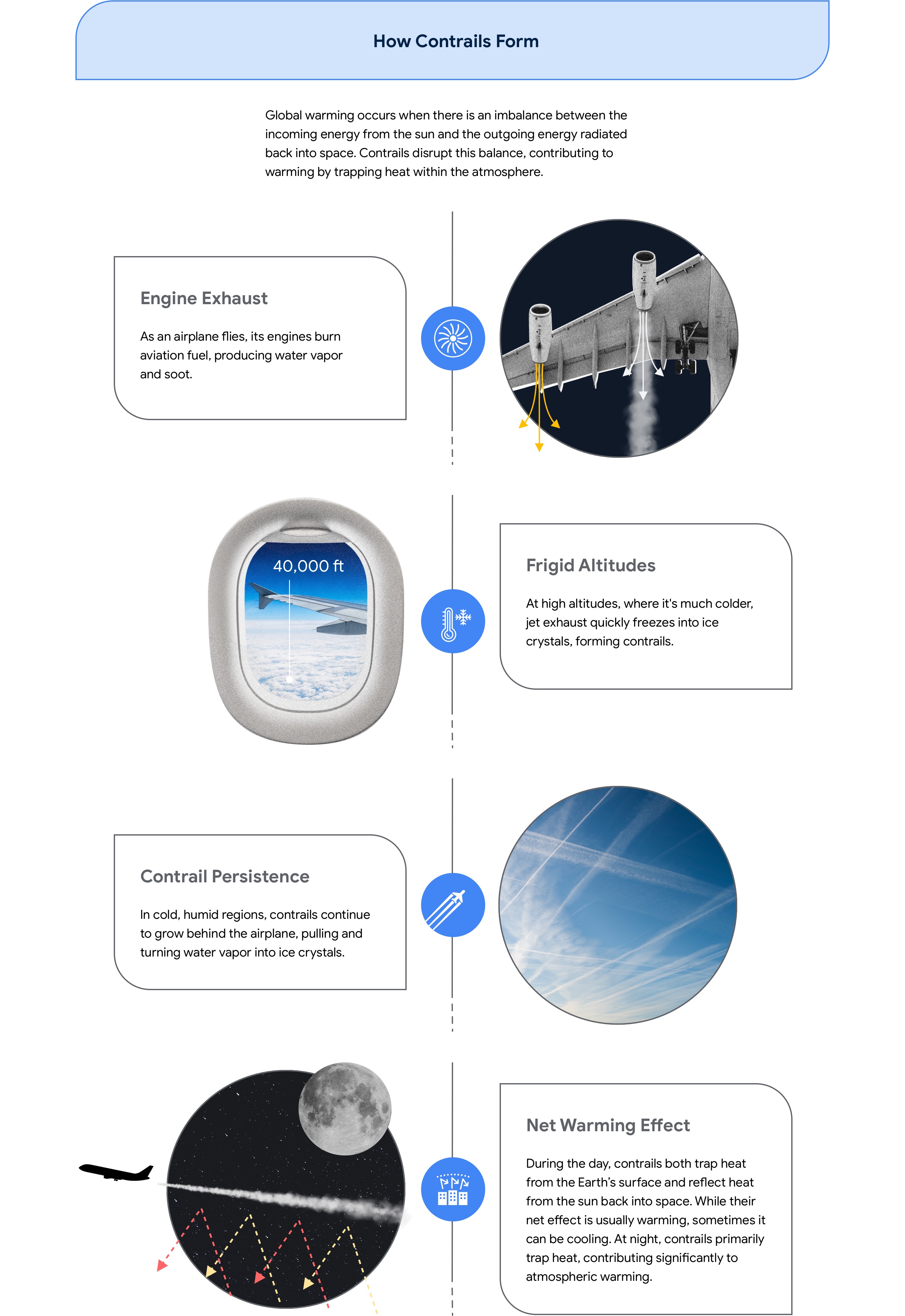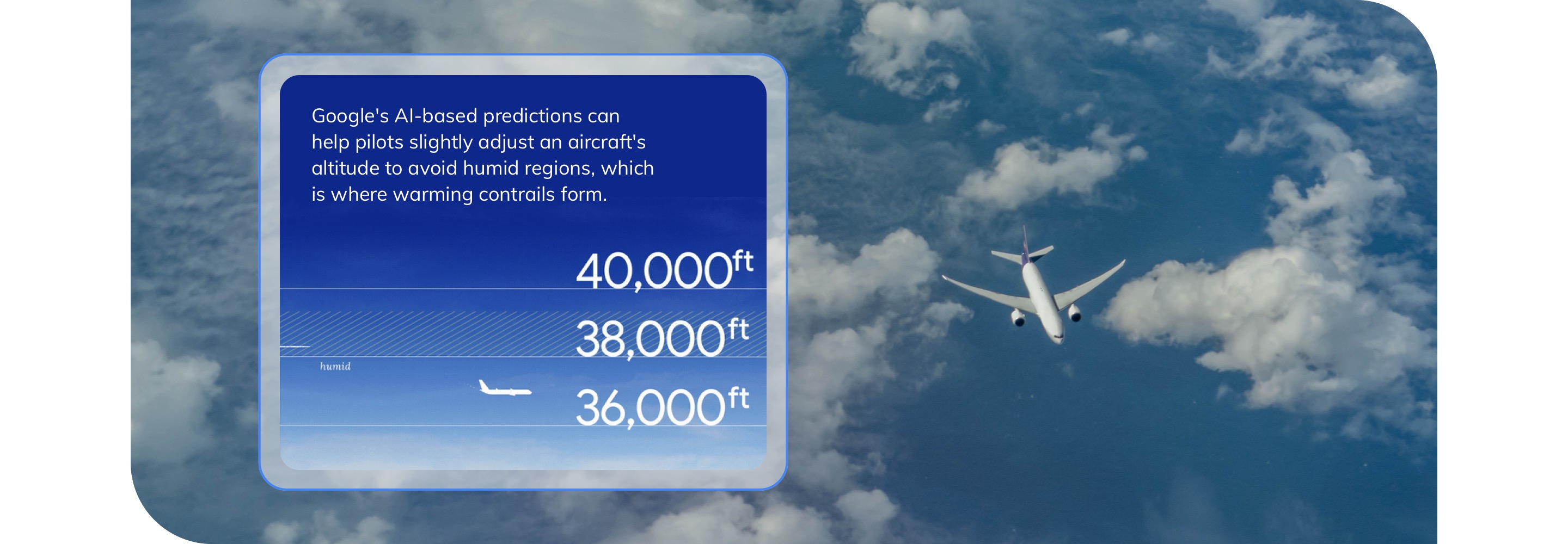AI Is Helping Mitigate Aviation's Climate Impact

At cruising altitudes, airplanes sometimes create linear white clouds called contrails, formed when water vapor condenses on jet exhaust particles and forms ice crystals. Contrails may appear small, but they contribute significantly to global warming.
The aviation industry has a role to play in mitigating climate change, and contrails account for roughly 35% of aviation’s contribution to global warming.
Until recently, the aviation sector and researchers lacked the information necessary to quantify contrails’ warming or decide on what actions to take to reduce it.
But as the science around contrails has become clearer, teams from Google and Breakthrough Energy have used artificial intelligence—trained with a large dataset of weather and satellite data—to forecast contrail-prone regions and recommend alternative flight paths that reduce contrail formation.


Addressing sustainability challenges in air travel is complex, as aviation remains a hard-to-abate sector, and airlines find themselves with limited options for going green.
While solutions like sustainable aviation fuel and electric and hydrogen-powered aircraft will play a role, there are practical barriers to achieving these solutions in the near term, as widespread adoption remains costly and the technology will require time to scale.
Grounded in the science of contrail formation and environmental impact, AI can play a pivotal role in contrail reduction in the next few years, providing airlines with more visibility and data on contrail-prone regions and helping to guide their decision-making process.

Since some contrails, especially those persisting at night, are more problematic than others, AI can play an important role in determining which areas of the sky to avoid. Google’s AI can specifically target areas most likely to form warming and persistent contrails.
“We’ve partnered with Breakthrough Energy to focus on long-lasting contrails because those can create the most warming,” says John Platt, Sr. Director of Applied Science at Google. “For airlines looking to allocate resources wisely, investing in mitigating the most warming contrails is critical.”

Prior to testing in the real world in partnership with American Airlines, researchers at Google and Breakthrough Energy set three key goals: First, to identify where contrails have formed in the past; second, to predict their potential formation in the future; and third, to confirm whether flights can successfully avoid creating contrails.
To answer the first question, research teams started by painstakingly identifying contrails in satellite imagery.
Answering the second question—predicting where contrails will form in the future—required adding weather and flight data. Researchers combined these sources to develop contrail forecast maps so that they could test whether pilots could choose routes that would minimize contrail formation.
“Our AI algorithms enable us to track the movement of contrails in the sky over time,” Platt says. “As time goes on, we’re able to get real-time monitoring of contrails in a way that wasn't possible before.”
Armed with better predictive power and insight into likely contrail locations, American Airlines put the AI system to the test.

American incorporated Google’s findings into in-flight software, enabling a small group of pilots to make altitude adjustments with the goal of preventing contrail formation. After examining satellite images, the Google Research team was able to see that when pilots proactively tried to avoid contrails, they were reduced. This small study of roughly 70 flights is a very positive first indication that contrail reduction can be scalable and cost-effective.
The outcome: AI-powered predictions helped pilots reduce contrails by an impressive 54%, validating an approach that’s effective in diminishing aviation’s climate impact.
Mapping contrail-prone regions and tracking active contrails equip airlines with comprehensive, real-time understanding of one important aspect of their climate footprint.

Contrail reduction is not only environmentally beneficial, but it also demonstrates scalability and cost-effectiveness, setting it apart from other sustainability solutions in aviation where cost can often pose a significant barrier.
Although flights that avoid creating contrails do burn a small amount of additional fuel, with the resultant increase in CO2, only 15% of flights will need to adjust their altitude to reduce contrails, according to Google’s models. American Airlines flights would burn only 0.3% additional fuel to avoid contrails, if scaled across American’s entire fleet—and the Google team has calculated that the climate benefit of avoiding contrails is 20x the additional CO2.
Google will continue research and development to avoid nighttime contrails specifically, and to automate avoidance, target the highest-impact contrails and improve satellite-based verification
Platt explains that integrating contrail reduction into pilots’ training and flight planning systems could be an effective integration path, as airlines today utilize software platforms that predict turbulence-prone areas—predictions that allow pilots to avoid those areas for safety reasons.
“There are software platforms that offer airlines predictions of turbulence zones to help them steer clear,” Platt says. “Contrail reduction can leverage those same software platforms to help make the operational adjustment for airlines as straightforward as possible.”

To help scale contrail mitigation tools and facilitate their widespread adoption by more airlines, Google is working with software providers to integrate these insights into the cockpit—including active collaboration with nonprofits, governments and intergovernmental organizations like EUROCONTROL.
In October, the EUROCONTROL region, which includes Belgium, the Netherlands, Luxembourg and northwest Germany, announced a new partnership with Google that will enable it to provide aircraft flying through this airspace with information about how to avoid contrails.
This breakthrough in contrail reduction is only the beginning of how AI could help advance progress toward a more sustainable future across aviation and a broad array of other sectors.
“The power of AI lies in its ability to improve complex data-driven decisions across various sectors of our economy,” says Platt. “This is crucial in addressing climate change because it enables informed decisions that account for sustainability.”
